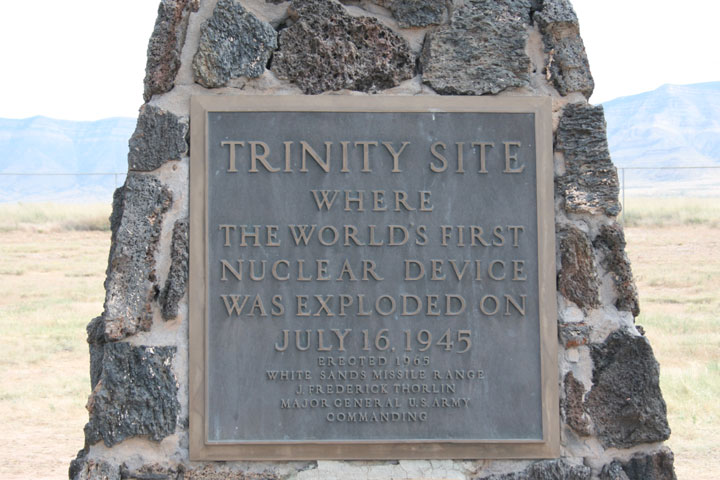|
University of Chicago, IL Oak Ridge, TN Los Alamos, NM Trinity Site, NM
Historic Manhattan
Project Sites It is interesting to note that this may or may not have happened if nuclear physicist Leo Szilard had not read HG Wells' 1913 science fiction book "The World Set Free." This is the story of a world at war, where the opponents are dropping atomic bombs on each other from bi-wing aircraft. Wells was very astute when reading Ernest Rutherford's 1911 theory on the makeup of the atom, and then being able to visualize atomic bombs made from uranium or thorium. This was all on the eve of what HG Wells called "The Great War" in his 1913 book. The Great War is know as today as WWI. WWI introduced aerial warfare. It had not really been used up to this time. H.G. Wells was also able to foresee the airplane used as an instrument of war to drop atomic devices. Also, he was of the opinion that it would take until 1956 for scientists to perfect an atomic bomb. That is the year "The World Set Free" takes place in, which was only 11 years longer than it actually took. In any event, Leo Szilard read "The World Set Free" in 1932. Then in September of 1933, after reading an article in a London newspaper about the continuing work of Rutherford and others, Szilard came to the realization, while crossing a London street, that a continuous nuclear chain reaction would be feasible if only he could find an element that would produce two neutrons from its atom for each neutron that struck it. In Section 8 of "The World Set Free," HG Wells mentions both uranium and thorium which meet this criteria. "The World Set Free" is not usually found at the local bookstore, as it is one of HG Well's less popular and more obscure books; as opposed to his "The War of the Worlds," which is probably his most popular and most famous. However, like just about everything else one needs, it can be purchased from Amazon. For the historian, this and Richard Rhodes' "The Making of the Atomic Bomb" are must reading.
University of Chicago, IL
Oak Ridge, TN
Los Alamos, NM
Trinity Site, NM |
